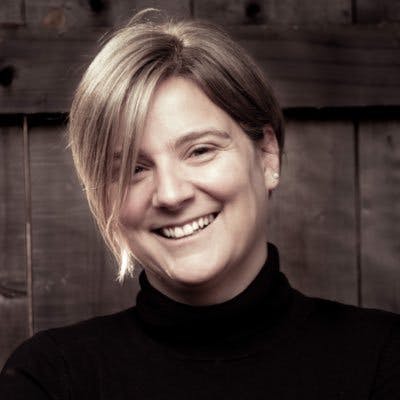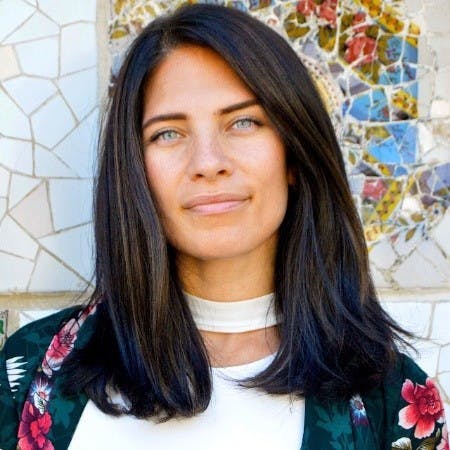Season 4 - Episode 7
Know What You Need to Accomplish
Christine Itwaru is currently the Director of Product at Pendo, a software that helps you understand your users with product analytics and qualitative feedback . She talks us through her personal journey, diversity and inclusion, product growth and more.

“Question [00:01:00] Why don’t we start with your personal story? How did you get started? ”
Christine [00:01:03] Sure. I love telling this story because it’s one of those things that makes me, that reminds me that things are meant to be. I’m a native New Yorker now living in Raleigh, been here for almost three years and I got my degree in marketing with a concentration in finance, from st. John’s University in Queens, New York. I always figured that finance was the right thing to do, being a New Yorker, that’s where the money is, that’s where the excitement is. I did like marketing a little bit more, and I followed more of the marketing path, and I didn’t end up liking it. And then I didn’t think or remember much about my finance concentration and a girlfriend of mine said to me, “Hey, do you want to come and work at Jeffrey’s?” Which is this investment bank, a Wall Street firm. And so I was like, sure, except, I don’t have much experience there and she’s like, well, your marketing asset is what we need, as you as an asset. And marketing’s great. So product marketing enablement, that sort of thing. So I took the job and it was for an internal proprietary system that the team was building at the time. I’d loved it and it was such fun.
About a month I was training a user over in our London office. And he was so frustrated with this widget on the dashboard that should have gotten him what he needed, but it was just an early version of the feature. As we took on product, they didn’t have product managers at the time and our bosses were building everything. He sat with him and I saw the frustration and I was so compelled to just go back to my room and just draw off what I thought he would want or what I thought would solve what this guy was looking for. And we put it together and flipped it to produce the next day, and he was just like so excited.
That was my moment of “what is this that I just did? This is not marketing. This is cool.” My boss was like, “you just did Product Management” and I didn’t know what it was. He was like “do you want to do more of it?” And I said yes.
My manager and I decided to just dive into this discipline and try to build it out. And that’s, how I got started. By the time my time was up over at Jeffrey’s, I was owning much of what was going on in the product team, and partnering really closely with our head of engineering and just really crafting something for that company that was helping the business run efficiently. So, that was my happy accident. And I haven’t looked back since then.
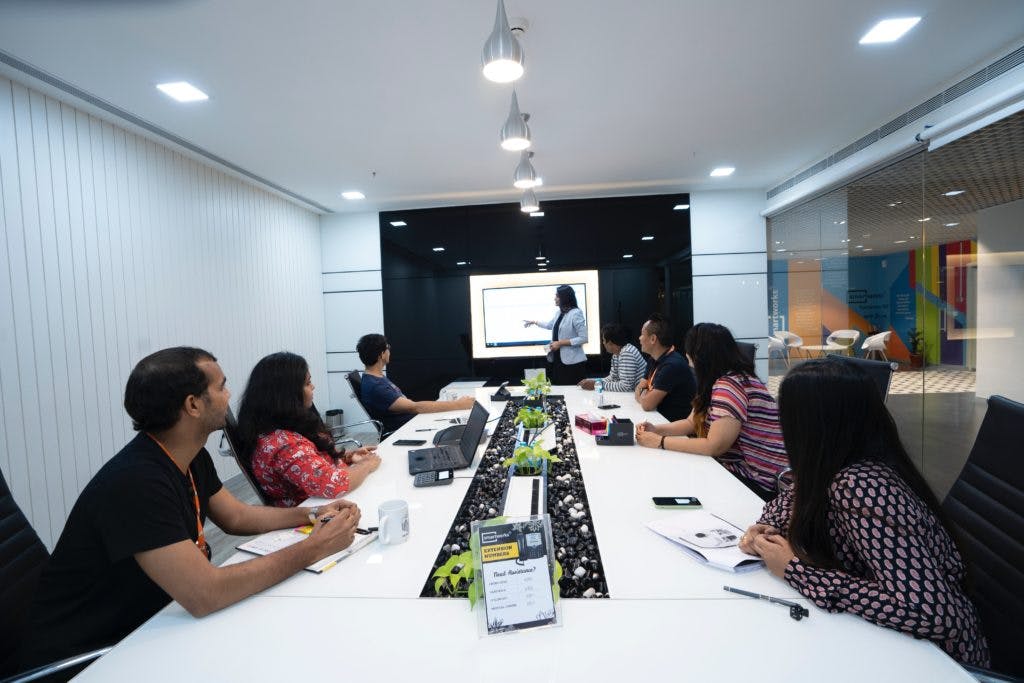
“Question [00:08:45] How did you make that full transition to a high tech company? ”
Christine [00:08:50] I’m a firm believer that everything happens for a reason and everything’s meant to me. So when I left Jeffries, I went over to another company that was a more FinTech focus and served external customers. So my primary role in Product Management was our internal user base, and I shifted over to serving close to 50 customers in the finance space. I was finding that as much as I loved doing the product side, or as much as I love doing what I was doing, building teams, management, I loved being a manager. I wasn’t as thrilled about what it is that I was putting out there to the world, it didn’t speak to me as a product person like, okay, this is something that’s thrilling me in terms of a product.
It was exciting in terms of the outcomes. It was driving from my customer, which is great, but this, the subject itself, and finance were not for me. And that’s interesting because I took that concentration in finance. After all, I said, this is the way I’m going to need to go to succeed. So what I found more and more was that my management position kept consistent. And the one thing that I kept leaning into was how to drive really good outcomes for our customers and lean into the pain. That just is core to product, I think. And what was going on was that I didn’t feel like IO was solving enough of that pain. And when the opportunity presented itself at Pendo to move into an organization that is truly maniacally focused on our customer and driving business outcomes on top of it.
I jumped at the chance because I knew that passionate people were working on a product that was meant for people like me who were trying to lean into that data to solve pain for customers. So it was a no brainer, I think you’re right, it’s very meta. That’s what makes it super exciting. And everyone that we talked to asks that question, it’s like, what does it feel like to work for a product company that starts product managers? And the cool thing is our internal people when they start and they go through onboarding, that’s the first thing I suggest to them, which is like, you are talking, you are selling to the people that are building the product, you know, that you’re selling. The best thing you can do is sit down and spend some time with your team and product and understand what you’re doing. So I don’t know if there’s any other way to explain that, when you find your heart and product and you find the place that you can do it, it’s like the pieces aligned.
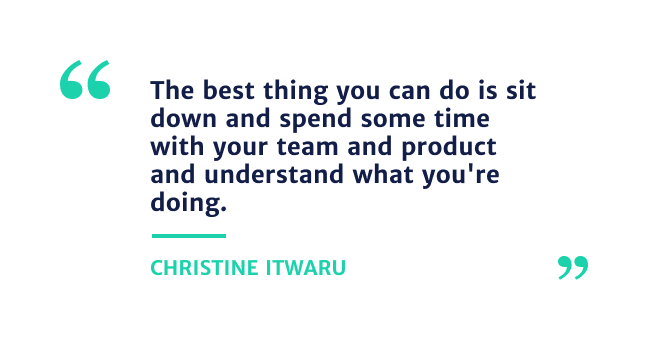
You might also be interested in: Big Tech vs Small Companies with fmr Rover Sr PM

“Question [00:19:17] What we can do as an industry to increase diversity and inclusion? ”
Christine [00:19:26] Well, the first thing is just a really simple thing that just gets overlooked. I think that it’s just amplifying each other’s voices. With, with all of the recent events in our country, in particular, I think that the biggest thing that’s come up for us is looking deep within ourselves and seeing if we’ve taken the opportunity to amplify somebody else’s voice. People often overlook that because they go off, they go about their day to day and they just forget, or they don’t think that somebody may not feel comfortable speaking up because, of the way that they may be perceived or they feel that they need to be perceived. So for women, in particular, I’ve seen a whole lot more around people saying, check this out, look at what she did and look at what her contribution is saying her name, like all of the women who have contributed to many things over our history that we didn’t even know about.
Speaking up and amplifying the success of another individual, whether they are, a person of color or a female, it doesn’t matter, I think that that’s important. That’s just a little thing like I said, that goes unnoticed. And that’s one and the other thing too is making sure that you are looking for people, early on that you want to grow without that bias lens. And there’s unconscious bias. A lot of people do have, and then a lot of companies have been putting a lot of work into unconscious bias training. That’s lifted that uncomfortable feeling to the forefront, but it’s necessary now. I’m seeing a whole lot more movement around university recruiting bringing people who look like them to the universities, whether it’s virtual or if they’re able to do it in person today.
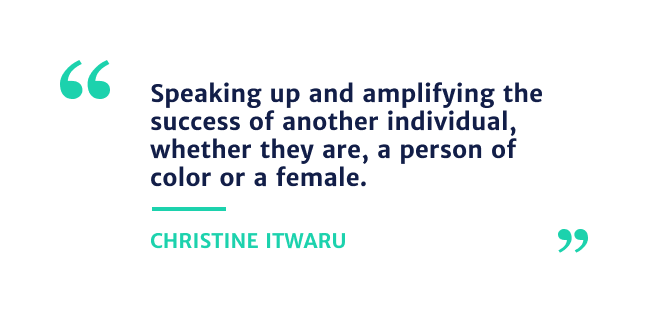
So that younger people feel comfortable saying, I want to approach that table. I think back to when I was at St John’s, and that was something that I was conscious of, I want to feel comfortable walking up to someone. So the earlier we start the better chance we have to grow that pipeline of diverse talent within organizations. That’s where beauty happens because the diverse perspectives help companies see things differently and can drive some great outcomes. I’ve seen some risks that were taken and they were taken because, recently people want to include everyone at this point and had they not been included, that voice wouldn’t have been heard and that risk wouldn’t have been taken. And now I’m seeing some great outcomes.
You might also be interested in: Innovation, Inclusivity, and Women in Product

“Question [00:23:12] Is this a cross functional topic? What’s your take on it? ”
Christine [00:23:18] Well, Product Led Growth is amazing. Yes. It’s become a sort of buzz word. Our CEO just wrote a book about product-led organization. We’re super proud of that. Apart from it is product ops. I think a product led to me right now means, how are you growing organically within your customer base through the experience in the product and who are the people within your organization that you need to involve to make sure that effort is happening? There’s the MQL marketing qualified leads where people are trying to push products through that method. And then now we have PQRS that are coming up. I think that at some, at some stage there’s a synergy that needs to happen, not just from marketing and product, but also from your internal customer-facing folks who know your customer base well enough to say here’s where things are strong.
Here’s where we can lean into to drive a better experience and potentially expand in an account for example. It starts from the moment somebody opens up your application. So product-led growth is something that people need to think about from day one. So proper onboarding is critical, and that means, again, it’s not just one person at your organization focusing on it. It could be different departments, making sure that different personas are covered at each touchpoint. It also then moves into when you’re going into renewal, making sure that that experience is consistent. So the bottom line for me is that I think a lot of people are trying to think who’s going to focus on the product-led growth of an organization. I don’t think that there’s one person that can drive that success. There’s probably one owner, but it’s a combination of different departments, really putting their heads together to figure out what that experience is with the current offering. You have, that’s going to grow an account or potentially just expand within that user base.
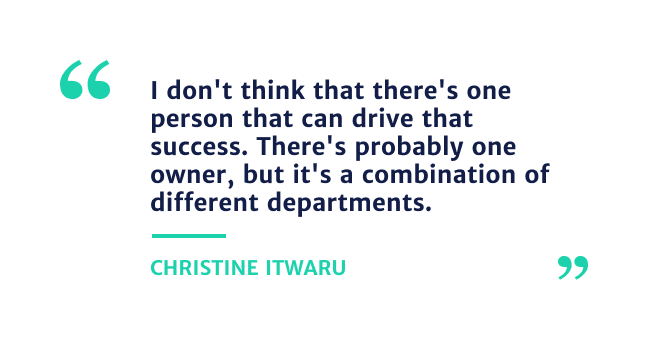
You might also be interested in: Product-Led Growth Strategy for Product Managers
Listen to our episodes on your favorite platform
Stay tuned for new episodes
By sharing your email, you agree to our Privacy Policy and Terms of Service

